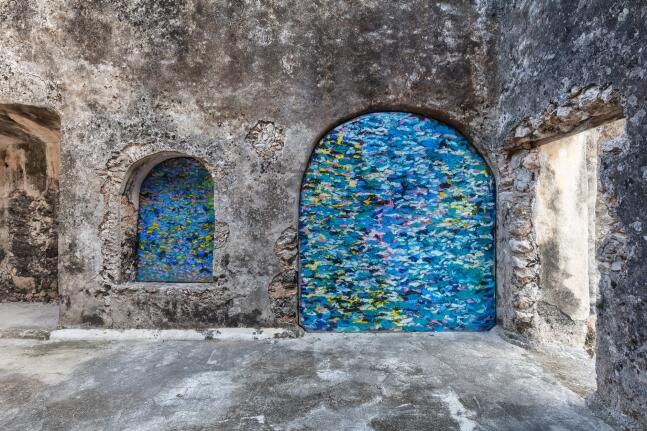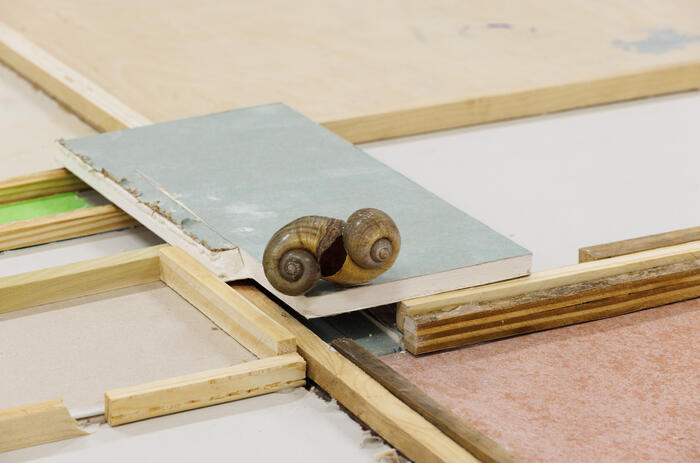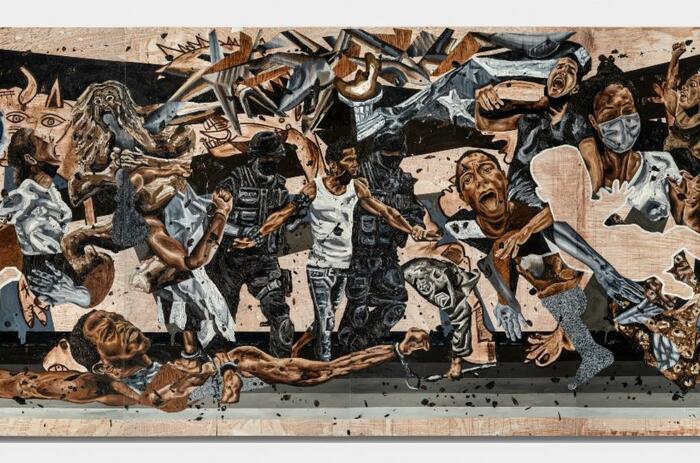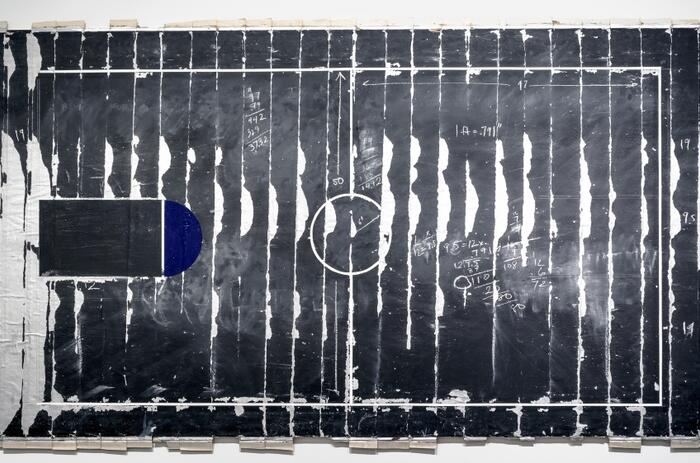OSCAR MURILLO JOINS KURIMANZUTTO
Oscar Murillo has developed a multifaceted and inventive art practice, which constantly probes questions of collectivity and shared culture, while being fundamentally connected to the affective qualities of different materials.

Murillo’s work create a social dimension that exists at the border between performances and events. He has invited collaborators to participate in actions including walking through New York or travelling between UK cities carrying mateos (traditional papier-mâché figures made in Colombia), painting swathes of linen black in locations around the world, or holding a party for friends working in the cleaning industry in London called Serpentine Late. His nuanced projects involve others as participants, as opposed to merely viewers, and point to a perpetual curiosity into complex issues of global social and economic relations, community, and spectatorship.
Murillo possess distinct and arresting material qualities. He is known for large-scale paintings which combine fragments created at different times, in different locations and using a variety of techniques, notable for their use of expressive and energetic mark-making. The artist is also recognised for creating immersive installations, combining materials such as draped black canvas; rock-like sculptures formed of corn and clay; rusted metal bed frames; and furniture including antique church pews. These experiential and unique works, which can often be found in unusual settings, such as inside functioning churches, schools or outdoors, are testament to the artist's commitment to the affective power of material to convey complex meditations on contemporary society.
-
Oscar Murillo, Ética y Estética, San Agustín tekantó, Yucatán, México, 2021
-
Oscar Murillo, Ética y Estética, San Agustín tekantó, Yucatán, México, 2021
-
Oscar Murillo, Ética y Estética, San Agustín tekantó, Yucatán, México, 2021
-
Oscar Murillo, Ética y Estética, San Agustín tekantó, Yucatán, México, 2021
-
Oscar Murillo, Ética y Estética, San Agustín tekantó, Yucatán, México, 2021
From September to December 2021, Oscar Murillo installed Ética y Estética at the church and convent of San Agustín Tekantó, in the state of Yucatán, México, where Murillo lived and worked while producing the project. Here, the artist continued his series surge, which features layered, gestural strokes in oil paint that flow horizontally across the canvas. In the works produced in Yucatán, the artist used the Maya blue, a unique bright azure blue pigment manufactured by cultures of pre-Columbian Mesoamerica from the region. Murillo consciously evokes the waterlilies by Claude Monet, executed when the artist's vision was impaired by cataracts. The artist relates impaired vision to a 'social blindness' which he perceives as pervading contemporary society.
-
Oscar Murillo, Ética y Estética, San Agustín tekantó, Yucatán, México, 2021
-
Oscar Murillo, Ética y Estética, San Agustín tekantó, Yucatán, México, 2021
-
Oscar Murillo, Ética y Estética, San Agustín tekantó, Yucatán, México, 2021
-
Oscar Murillo, Ética y Estética, San Agustín tekantó, Yucatán, México, 2021
-
Oscar Murillo, Ética y Estética, San Agustín tekantó, Yucatán, México, 2021
The artist also created a reinterpretation of the traditional catholic via crucis installed on-site alongside the surge paintings. In this other series, Murillo individually responds to fourteen images hanging in the aisles of the church that depict the stages of Christ on his way to the crucifixion. His own paintings were displayed in dialogue with the original works and show abstract representations of the scenes. Murillo also intervened the ruin of the 16th century convent adjoining the church by placing oil paintings inside empty niches, directly exposing the works to the climate of the Yucatán jungle.
kurimanzutto
col. san miguel chapultepec, 11850 mexico city







